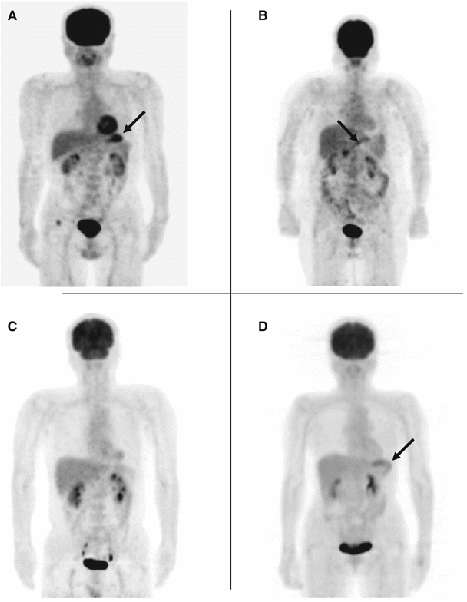Positron emission tomography uses small amounts of radioactive material to diagnose or treat a variety of diseases, including many types of cancers, heart disease and certain other abnormalities within the body. It also measures important body functions, such as blood flow, oxygen use, and sugar (glucose) metabolism, to help doctors evaluate how well organs and tissues are functioning.

Depending on the patients condition and disease, the radiotracer is either injected into a vein, swallowed or inhaled as a gas and eventually accumulates in the organ or area of the body being examined, where it gives off gamma rays. This energy is detected by a device called a gamma camera, a (positron emission tomography) PET scanner and/or probe. These information is fed to a computer to measure the amount of radiotracer absorbed by your body and to produce pictures showing details of both the structure and function of organs and tissues.
In some hospitals, nuclear medicine images can be superimposed with computed tomography (CT) or magnetic resonance imaging (MRI) to produce enhanced images, a practice known as image fusion or co-registration. These views allow the information from two different studies to be fused, leading to more precise information and accurate diagnoses. In addition, manufacturers are now making single photon emission computed tomography/computed tomography (SPECT/CT) and positron emission tomography/computed tomography (PET/CT) units that are able to perform both imaging studies at the same time.
CT imaging uses special x-ray equipment, and in some cases a contrast material, to produce multiple images or pictures of the inside of the body. These images can then be interpreted by a radiologist on a computer monitor as printed images. CT imaging provides excellent anatomic information.
Today, most PET scans are performed on instruments that are combined PET and CT scanners. The combined PET/CT scans provide images that pinpoint the location of abnormal metabolic activity within the body. The combined scans have been shown to provide more accurate diagnoses than the two scans performed separately.
